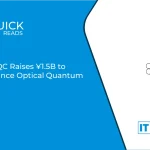Mazda Motor Corporation and Nippon Steel Corporation announced that their joint efforts in co-creation have been applied to the All-New MAZDA CX-5, which was unveiled in July. Working together, the two companies managed to develop an optimized body structure quickly, showing a new way for automakers and material suppliers to work together.
The automotive sector is undergoing rapid transformations. The factors such as electrification, advanced technologies, regulations related to the environment, geopolitical tensions, increased prices of raw materials, and the transition to software-based vehicle design are all altering the parameters of value and risk assessments. Mazda is of the opinion that the supply chain should adopt a more collaborative and creative approach in order to keep pace with the changes.
Mazda’s 2030 Management Policy focuses on cutting costs and making the supply chain stronger. The goal is to remove inefficiencies, known as muri, mura, and muda, and work closely with suppliers over the long term. Bringing suppliers in early during development helps Mazda make manufacturing more efficient while also creating value and lowering costs.
Also Read: TDK and Gelion Form Complete Collaboration Deal
The CX-5 is the first real result of this approach. Because Nippon Steel was involved from the start, Mazda could look at the whole supply chain differently while covering design, production, and procurement. Using Nippon Steel’s NSafe™-AutoConcept ECO3 concept together with Mazda’s development and analysis tools, the CX-5’s steel body is 10 percent lighter than the previous model, while keeping rigidity, safety, and driving performance intact.
Mazda Motor Corporation and Nippon Steel Corporation also worked together on steel selection and sourcing. Choosing a Nippon Steel plant near Mazda’s assembly line simplified procurement, cut transport costs and CO2 emissions, reduced inventory, lowered geopolitical risks, and helped both companies reduce indirect production costs.
Looking forward, the two companies plan to expand this collaboration to more models, aiming to build a strong, efficient supply chain that can create value and cut costs across multiple vehicles.







